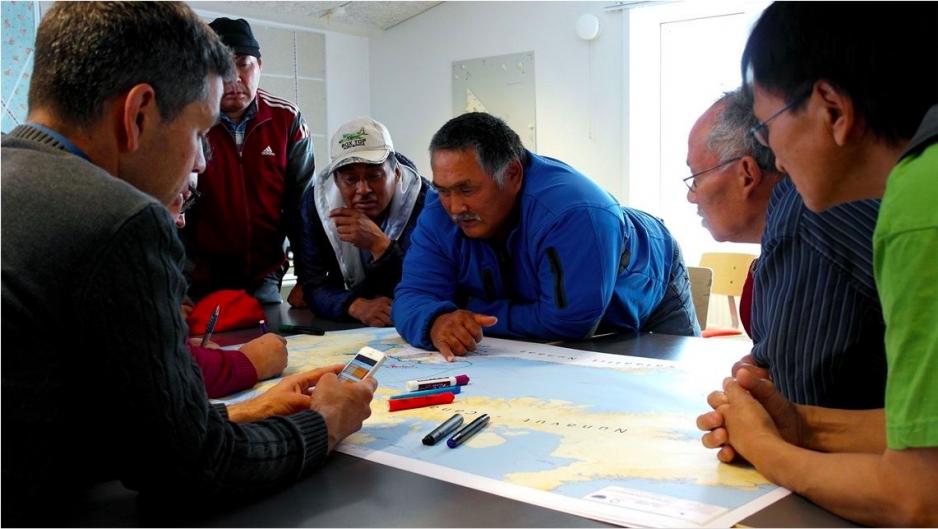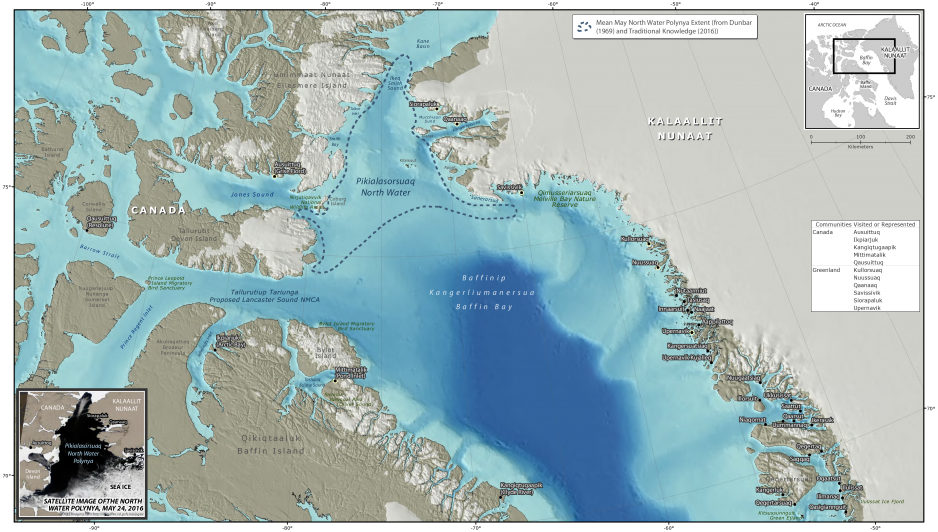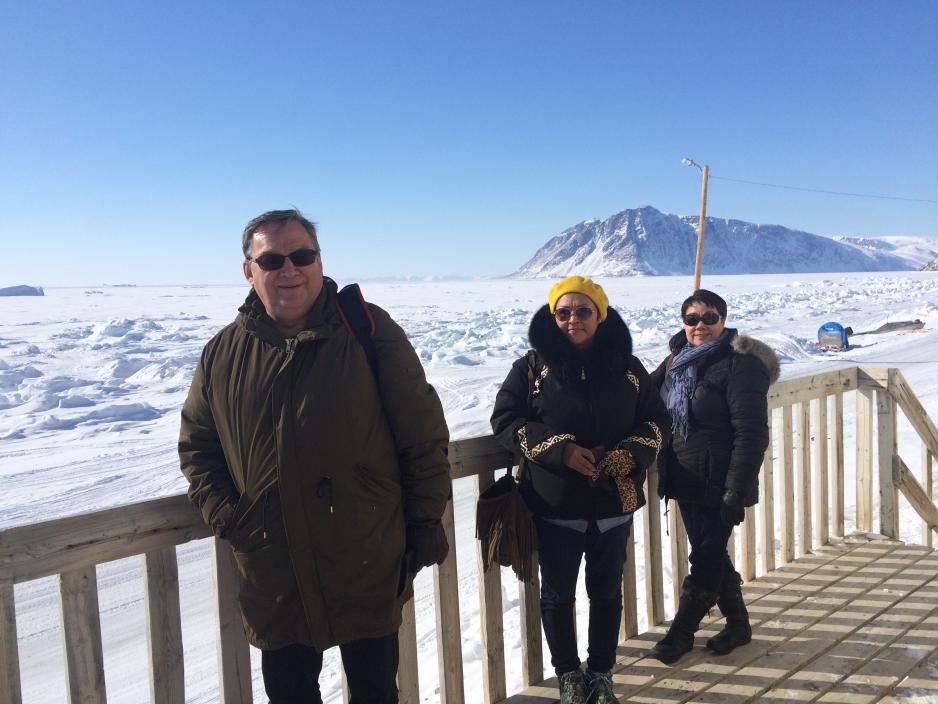Inuit ready to push for cross-border management to protect their ‘Great Upwelling’

Inuit representatives in Nunavut and Greenland have assembled the argumentation they believe will lay the foundation for the establishment of an Inuit-managed protected area in the culturally significant waters between the two jurisdictions.
Drawing on the knowledge of those living along the shores of the Pikialasorsuaq, or the ‘Great Upwelling’, an expanse of water at the northern edge of Baffin Bay that remains ice-free year-round, is the best guarantee it will not be overwhelmed by rapid, unwelcome changes in the region, the members of the Inuit Circumpolar Council commission charged with compiling the recommendations argued in a report issued on Thursday.
The Pikialasorsuaq, an oceanographic feature scientists call a polynya, is the largest and the most biologically productive of its kind found north of the Arctic Circle. It has been recognised by Inuit in the Qikiqtani (Nunavut) and Avanersuaq (Greenland) regions for generations as critical habitat for scores of species, including narwhals, belugas, Arctic char, little auks, eiders, gulls, kittiwakes, seals and polar bears.

The recommendations, which also include the re-establishment of a free-travel zone for Inuit across the region, were compiled after a series of commission visits in the spring and autumn of 2016 to communities that rely on the Pikialasorsuaq for their livelihoods.
“People from the communities adjacent to the Pikialasorsuaq want to be involved in the management and monitoring of this unique ecosystem. They recognise that the health of the species upon which they depend is connected to the health of the Pikialasorsuaq,” Kuupik Kleist, a Greenlandic member of the commission, said.
Instead of ruling out all commercial activity, the commission recommends establishing an Inuit-run managing authority that would establish guidelines for transport, shipping and off-shore industrial development.
“This regime would ensure the monitoring and conservation of living resources within and adjacent to the Pikialasorsuaq and the related health of communities that depend on these resources,” the report states.
A similar management area has been established in Lancaster Sound, in the waters north of Baffin Island. Here, resource-extraction has been banned, and it is expected that communities living around the Pikialasorsuaq will also demand that it be banned there as well.

Mr Kleist believed the report provided the necessary background for an “informed decision” that would provide useful for the commission as it moved into the more challenging second phase of its mandate: lobbying authorities in Ottawa and Copenhagen to work with the territorial government in Nunavut, Greenland’s Self-Rule Authority, the ICC and other Inuit groups, to ensure that the recommendations can be put into place.
One pressing reason for seeking to manage the Pikialasorsuaq is the increasing instability of the northern ice bridge forming its southern barrier. As this happens, the polynya becomes less defined. The consequence of this development, linked to larger climatic shifts observable in many parts of the Arctic, is not known, but it is feared it could lead to end of the conditions that allow the polynya to arise.
“We think we are threatening a very important area by not doing anything,” Mr Kleist said.
